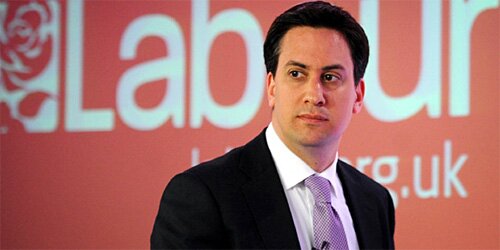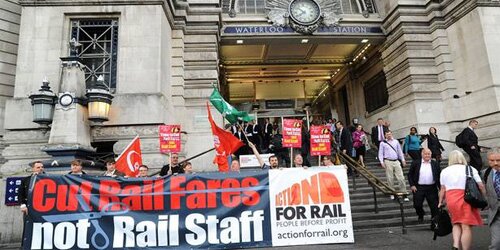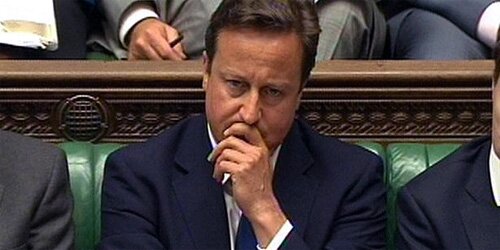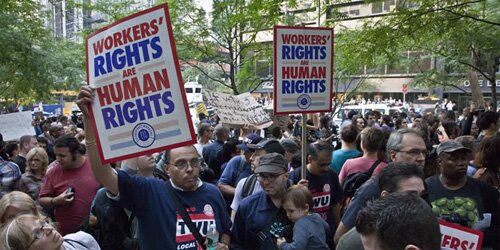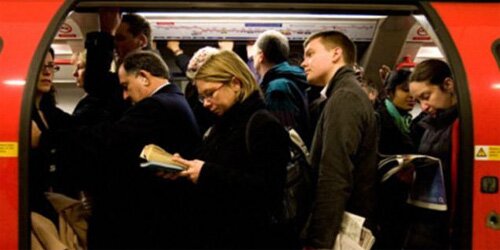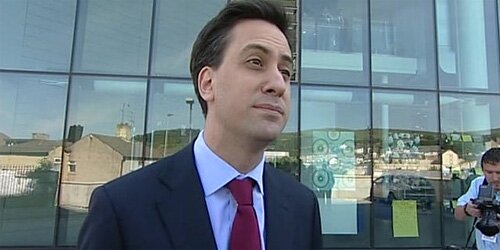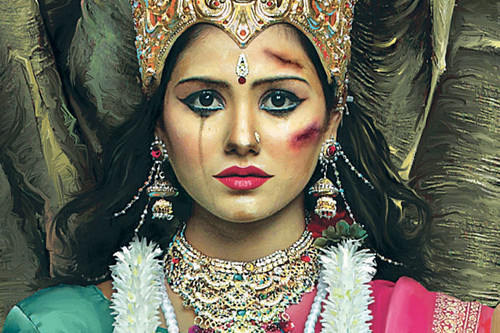Why go on marches?
5:17 pm - April 29th 2009
| Tweet | Share on Tumblr |
I posted a piece at the Guardian CiF about the thirtieth anniversary of the death of Blair Peach and this has prompted some discussion about the parallels with the recent death of Ian Tomlinson. One of the points discussed in the comments is how should both the police and fellow protestors behave towards a ‘hardcore of people who’d turn up just for the ruck?’
I do not have a short answer to that, but it got me thinking about the type of demonstrations that I have gone on down the years and also about what the point of going on a march really is.
I was arrested was in Southall, two years after Blair Peach’s death, where I was taking part in a demonstration that had been banned under the Public Order Act. I was under 16 years old at the time and so was not charged. A conviction followed a couple of years later after I punched John Tyndall, the then leader of the British National Party, during a demonstration. Violence was very much part of the day to day experience the male teenage world that I grew up in. I was stabbed in a playground fight when I was 13 and once suspended for hitting a fellow student with a chair during a lesson. My comprehensive school probably sent more people to prison than University every year and just surviving it was a toughening experience.
The issue that politicized me was anti-racism. The main reason for this was that my best friend at school was Indian and we used to stick up for each other in fights. When I started going on demonstrations I was taking a set of attitudes which were quite instinctive, but I had also figured out a basic political philosophy, which could be summarized as ‘no-platform’. As far as I was concerned we should challenge the fascists physically for control of the streets. They should not be allowed to march, hold rallies, establish newspaper selling pitches or in any other way present themselves as part of the political mainstream. That meant taking them on wherever and whenever they attempted to do so.
No platform?
This was a divisive issue for the left at the time. In 1974 a rally organised by the Communist Party (CP) against a National Front meeting in Red Lion Square had ended in violence and the death of demonstrator, Kevin Gately. The CP were a significant force at the time and controlled both the National Union of Students and several trade unions (NUS had organised a special conference near to Red Lion Square on the day of the demonstration so that they could run coaches to it). David Aaronovitch, Trevor Philips and Peter Mandelson were all members, while their ‘fellow-travellers’ included the likes of Jack Straw, Charles Clarke and Harriet Harman. The ‘Battle of Red Lion Square’ led the CP to withdraw from demonstrations where such confrontations seemed likely and it was the Socialist Workers Party (SWP) who subsequently led a charge at Lewisham in 1977 that broke up a NF march. Blair Peach was in the SWP and several of their members were imprisoned for anti-fascist activity around this time. Eventually even the SWP felt things had got out of hand. They purged their ranks in 1981 and effectively withdrew from anti-fascist work for several years.
I realize that there is a debate about whether it is better to ignore the fascists entirely, or deal with them through rational debate, but let’s save that for another time. The CP view, which was influential on the Labour left, was that rather than confront the fascists themselves they should rely on the state to do so and so the ‘no-platform’ position turned into an argument that the state should enforce this. Racist ‘hate-speech’ should be criminalized and fascist marches should be banned. Variations of this argument have been going on ever since.
The early 1980s saw a revival of the peace movement, and huge CND marches, as well as big demonstrations on international issues such as opposition to Apartheid and support for the revolutionary left in Latin America. They were also overwhelmingly middle-class and so the vast majority of people who attended them would probably have instinctively recoiled from the thought of violence. But they were also peaceful because the point of them was to try and influence government policy by showing the strength of public feeling on particular issues – and you don’t do that by throwing rocks at the police. There was an organised mainstream left who saw the point of going on marches to make their feelings known and who liaised with the police in advance about the route, stewarded the marches properly and isolated potential trouble-makers.
At the same time there were also a series of bitter industrial disputes: most notably the miners’ strike of 1984/85, but also the Stockport Messenger dispute that preceded it and the News International one that followed. Thousands and thousands of people were arrested during the course of these disputes. My memory of the picket lines was mainly a lot of pushing and shoving, name-calling and the occasional lash-out from either side. The police and the strikers came from similar backgrounds, and often the same communities, so neither side wanted to escalate things too much. Nevertheless, there clearly were violent incidents. I have still got a small scar just above my left eye from where I was kicked unconscious by a police officer during the Stockport Messenger dispute. I also got the down-payment for my first flat from suing the police for a wrongful arrest during the Miners’ strike.
Working class Tories
The violence of those clashes certainly damaged the cause of the strikers – because it gave the impression that the strikes were being maintained through intimidation. This might have been true around the edges, but my memories of the time are that most of the strikers were just ordinary people, angry at the loss of their jobs. I think that much of today’s left has problems understanding that people can simultaneously disapprove of yet tolerate violence in a variety of day-to-day situations because of the differences between the class from which most of them are drawn and those whom they are professing to support.
There were more demonstrations in the late 1980s and early 90s; the Poll Tax and the death of Steven Lawrence are the ones that come to mind. The traditional CP/Labour left was much weaker by that stage and it was the SWP and Militant who took the lead. I remember quite a lot of those marches ended in violence, but I could never quite understand what the point of this was. I was fairly absorbed by then in campaigning for the release of the Guildford Four, the Birmingham Six, Judy Ward and the Winchester Three and this took up most of my energies. We did not try and organize any marches for these cases, because I doubt if anyone would have turned up. Instead we concentrated on legal strategies, discrete lobbying, cultivating links with establishment figures and raising the issue at the UN and European parliament.
Later on, I went to work for Liberty and we ran our own campaign on criminal justice issues. A chance meeting with a couple of anti-roads protesters meant I ended up on the roof of Claremont Road during the ‘Battle for Wanstonia’ and Liberty then reactivated its network of legal observers for the campaign against the Criminal Justice Bill of 1994 – David Toube was one of these back then.
Kill the Bill
As well as providing visible legal observers we also gave the campaigners private tactical advice and I remember a split within our office when they asked us whether or not we thought they should organize a march against the Bill. I was completely against it saying that it was bound to end in violence and this would play right into the hands of those who said the police needed more powers. One of my colleagues felt that the march could be controlled by effective stewarding and moral exhortations to ‘keep it fluffy’.
The organizers went ahead on this basis and the ‘Battle of Hyde Park’ ensured the Bill received its final parliamentary approval with an overwhelming majority. Labour’s then Home Affairs spokesperson, Tony Blair, first came to prominence when he persuaded his party that it could no longer afford to be seen as ‘soft on crime’.
I cannot remember the last demonstration that I went on, but that is because I left Britain almost 10 years ago. I can think of quite a few that I supported. But there others which I am sure I would not have attended even if I was basically sympathetic to the marchers’ aims. The following check-list might be a useful guide as to whether and when it is worth going on a demonstration.
Strategic: will the organisation of a demonstration hurt or hinder the cause that you support and how can it be organised better to do this? Trying to win broader support for the Palestinians or Tamils, for example, is probably not helped by having speakers from Hamas or the LTTE
Measurable: what specific value does a march – as opposed to another form of activity – add to your cause? Our media-friendly age means that a single protester taking direct action can sometimes have more impact than 20,000 people on the streets.
Achievable: what are you actually trying to achieve by marching? Did the protesters at the G20, for example, intend to persuade it to take certain measures, or prevent it from taking place (by physically blockading the venue) or were they trying to bring down the capitalist system? The tactics adopted should flow from the objective
Realistic: see above. But does everyone participating agree on this and how will you deal with those who disagree?
Timely: why march at one particular point of a campaign rather than another? Most marches are reactions to events and sometimes a badly-organised protest is better than doing nothing at all. But a series of gradually-dwindling marches can be bad for morale and counter-productive.
I am sure that others can add to that check-list. But, broadly speaking, if a march isn’t SMART than I can’t see the point of going on it.
| Tweet | Share on Tumblr |  |
Conor Foley is a regular contributor and humanitarian aid worker who has worked for a variety of organisations including Liberty, Amnesty International and the UN High Commissioner for Refugees. He currently lives and works in Brazil and is a research fellow at the Human Rights Law Centre at the University of Nottingham. His books include Combating Torture: a manual for judges and prosecutors and A Guide to Property Law in Afghanistan. Also at: Guardian CIF
· Other posts by Conor Foley
Story Filed Under: Blog ,Civil liberties
Sorry, the comment form is closed at this time.
Reader comments
Fantastic article. I have to pop off in a sec, so I’ll keep it brief.
I think that the main point of demonstrations is to motivate demonstrators, politically. It would be pretty outrageous if elected governments made policy on the basis of how many people could be persuaded to turn up on march. (I appreciate that some will disagree).
Squaddism v the BNP/NF/BM etc.. People should be protected from fascist thugs. Kenan Malik’s discussion of how he and some mates sat around in shops that were being targeted by racists is heartbreaking. But there’s a difference between that, and actually going out to look for fascists, for the sole purpose of having a ruck. I don’t think that you can defeat, electorally, a fascist party by beating up their activists.
Finally:
” Trying to win broader support for the Palestinians or Tamils, for example, is probably not helped by having speakers from Hamas or the LTTE”
The problem is, the purpose of STWC is winning broad support for Hamas; rather than supporting the Palestinian cause. They’re very closely tied to Hamas/MB and Jamaati factions. That’s their politics.
Hmm…’They were also overwhelmingly middle-class and so the vast majority of people who attended them would probably have instinctively recoiled from the thought of violence.’
You’re normally more careful than that.
And having had my annual work review this afternoon – which decended into the usual 90 minute slanging match – I’ve had enough of SMART for one day.
Other than that, an excellent article.
It depends what else you do to get the message across. You cannot rely on a demo (on its own) to get the message across. The Seattle demonstrations in 1999 were publicised in advance and this was accompanied by the use of the internet to distribute documents about the issues. This sparked off debates around the world about the issues. The delegates knew that they might actually face some difficult questions when they got back from Seattle, so they took time to read the papers and were more careful about what they agreed to. This was spun by some commentators as “the demonstrations stopped an agreement so the poor will get poorer”: well, yes and no. It wasn’t so much the demonstrations that stopped an agreement but the publicity for the issues generated by the threat of demonstrations.
Getting a message across is, of course, not always easy. The press will often go for the narrative about these mysterious forces who are out to cause trouble. But if you don’t have a strategy for getting the message across there isn’t much point in having a demo.
Part of the issue is that many protests nowdays have a heavy hard left presence. This isn’t necessarily bad in and of itself, but it means that a large part of the purpose of organising protests has come to revolve around these organisations.
Many protests that will not achieve anything are organised to keep an activist base busy and active, and also to try and recruit new people. With this attitude protests are organised without consideration. Its unlikely to change in the future unfortunately, but hopefully wider elements will get better at telling what is worth turning up to and whats not, and at turning up to organising meetings to stop everything being a hard left meeting-packers front.
David: I think the last time we met we were both wearing those big yellow ‘Liberty Legal Observer’ tabards and it was either immediately before or after a police officer had hit me with his riot shield (ah those were the days, tell it to the kids today though, brought up in a paper-bag I was, etc.).
Guano: had been thinking about mentioning Seattle, but the article was too long already.
There is a bit of a myth about this actually. The ‘debates around the world about the issues’ at Seattle was on a proposal – supported by the Clinton administration and a number of European countries – to put a so-called Social Clause in the World Trade Organisation. Most of the people who were demonstrating that day were US-based trade unionists who supported it.
But the demand was vigorously opposed by southern governments, trade unionists and social activists, who feared that it would be used for protectionist purposes (which it would have been). Martin Khor of the Third World Network was one of the most vigrous and articulate opponents. I remember this debate at the time because I had the social, economic and cultural rights brief for Amnesty UK and also because my then girlfriend was Clare Short’s special advisor. Britain reversed its initial support for the social clause and blocked with the countries of the developing world instead.
This was the cause of the deadlock – not the protest outside – and the irony is that most of the demonstrators were calling for something that would have hurt poor people and was being vigorously opposed by the people on whose behalf they claimed to be acting. This debate was one of the spurs for the formation of the World Social Forum in Brazil a couple of years later.
Achievable: what are you actually trying to achieve by marching?
I’ve always thought that is the interesting question.
If the idea is to demonstrate public feeling to the government, it is probably futile – the government will rightly rather trust its opinion polls and focus groups to tell it that.
If the idea is to intimidate someone, it is probably even more futile, at least in the UK, unless the marchers happen to have their own private army.
If the idea is to raise awareness of an issue amongst the general public, then probably either you don’t have enough supporters for a decent march, or the public is already paying as much attention as it ever will. With a few exceptions, if you need to attract attention, you need to do something that will grab attention even if done by very few people.
I am tempted to conclude that the majority of demonstrations are held in order to demonstrate to other demonstrators.
Shatterface: ‘And having had my annual work review this afternoon – which decended into the usual 90 minute slanging match – I’ve had enough of SMART for one day.’
I know the feeling!
Yeah.
Bet the Tamils in parliament square are wondering what the point of protesting is. They’re STILL there in their hundreds, and still not being reported – guess they’ve got their work cut out for them competing for mainstream attention with non events like swine flu, etc. Nobody would even know if they had a platform of LTTE speakers.
Interesting article. Sometimes it’s not the immediate effect that counts, but builidng movements. Action leads to more action. Sometimes just by taking action that doesn’t seem to have strategic value, on an strong moral issue, things can snowball and grow into something bigger in a way you couldn’t have predicted. So I’m all for considering the strategic value of actions, but sometimes you just need to do something anyway, – stand up and say “this is wrong”, even if you can’t predict the result it will have.
Conor, you were at many of the events that I was, and this all rings true. But there were two big demos against the CJB. The first went from Hyde Park to Trafalgar Square and didn’t kick off: the second went the other way and did. However, your checklist is pretty fine, and shows that there are different kinds of demonstration, and you can’t lump them all together.
Whatever the merits of ‘squaddism’, I’ve been in a couple of situations this century where fascists have tried to block marches (one a gay pride parade, one for an asylum seeker who killed himself) that I’ve been involved in organising. In those situations, going heavy on the security, just in case the police are not taking it seriously enough, is entirely reasonable. Ditto if (to take a non-hypothetical example) they’ve been making threatening noises about a Holocaust Memorial Day exhibition in a church, and turn up en masse nearby. Best to drive them out of town.
If there was a march for the Gurkhas, believe me, I’d be on it! How come there are no articles on this issue? The Government have got it badly, badly wrong I’m afraid.
Sue – yes we all ended up in the fountains at Trafalgar Square. And to be fair – it was the huge numbers of people that turned up on this – entirely publicised outside the mainstream or even far left – that convinced people it could become a mainstream issue.
You ask Shamik and I provide
http://www.independent.co.uk/news/uk/politics/brown-defeated-over-gurkha-ruling-1676153.html
http://www.guardian.co.uk/uk/2009/apr/29/government-loses-gurkhas-vote
http://www.dailymail.co.uk/news/article-1174653/Now-let-stay-Humiliating-defeat-Brown-forces-rethink-Gurkhas–news-comes-late-hero.html – even the mail are supporting the Gurkhas… Strange times indeed
I’ve never understood why some people in marches feel the need to dress up in silly costumes. It just makes the public think “who are these jokers?”.
Great article Conor – really enjoyed reading this.
I agree with the checklist, and that’s the main reason after the initially big anti-war march I didn’t go to any of the other anti-war marches. I don’t really trust the SWP on issues.
Reactions: Twitter, blogs
-
Liberal Conspiracy
New post: Why go on marches? http://tinyurl.com/dkj4jg
[Original tweet]
Sorry, the comment form is closed at this time.
NEWS ARTICLES ARCHIVE





